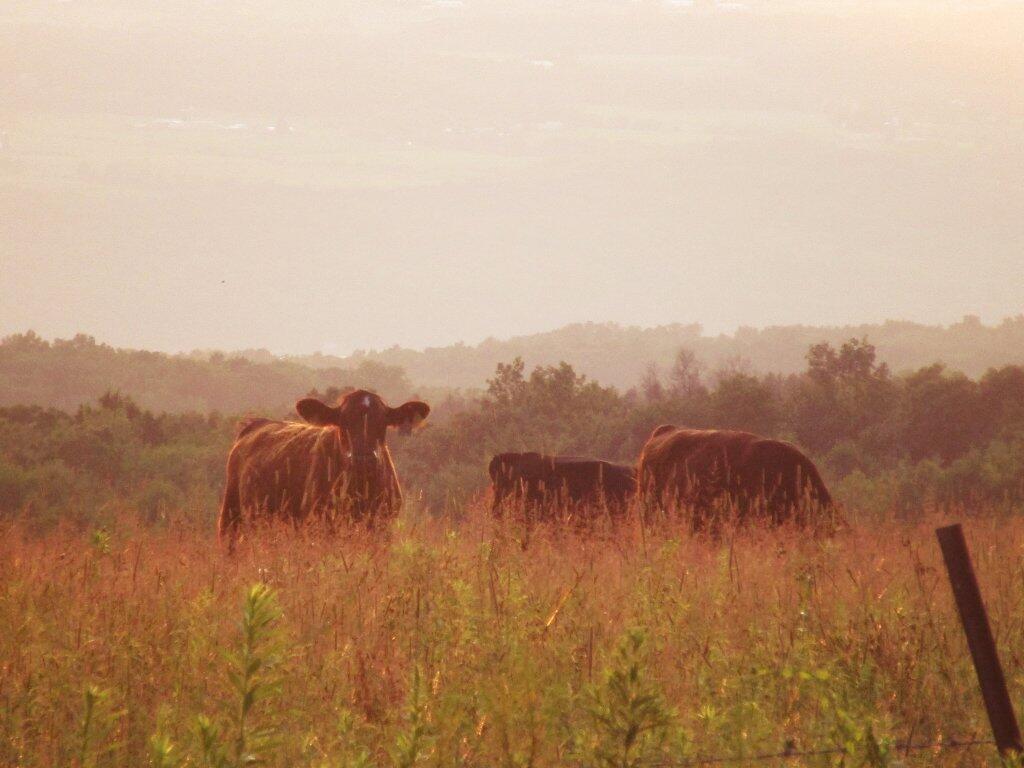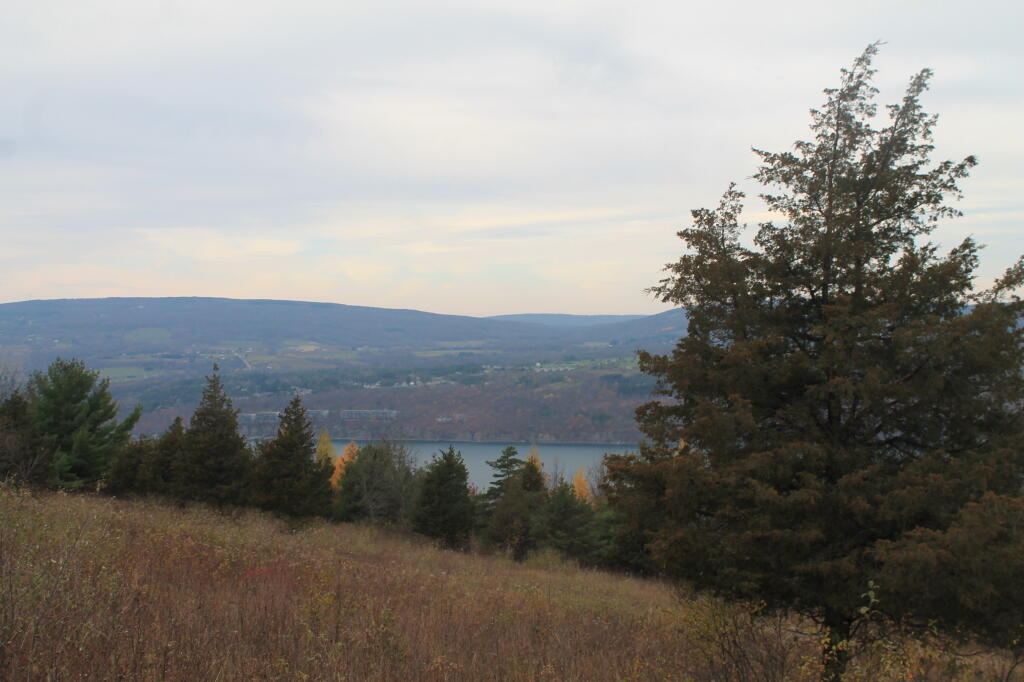The World’s Longest-Operating Coal Mine – UncoveringPA
November On Old Erie Canal Trail
Want to Save Animals? Stop Supporting PETA (A Wildlife Biologist/Conservationist Perspective) | cpisarek
Human brain hard-wired for rural tranquillity | The Independent
Humans may be hard-wired to feel at peace in the countryside and confused in cities – even if they were born and raised in an urban area.
According to preliminary results of a study by scientists at Exeter University, an area of the brain associated with being in a calm, meditative state lit up when people were shown pictures of rural settings. But images of urban environments resulted in a significant delay in reaction, before a part of the brain involved in processing visual complexity swung into action as the viewer tried to work out what they were seeing.
Green Fair and Climate Change.
Yesterday at the Green Energy Fair 🔌 I listened to Woodstock Farm Sanctuary’s lecture on animal agriculture 🐮 and climate change 🌎 …
Honestly, I was quite curious to hear what they had to say, even though I knew it hardly would be positive and probably downright misleading. And it did not disappoint me, reflecting all the typical stereotypes of people who know nothing about agriculture or animals, have spent little time in the country and have a pretty poor grasp of science, facts or reality. Here’s my thoughts on some of the things said ….
Farms sometimes are pungent but that doesn’t mean their bad for the earth
Farms raise crops and livestock. Crops like silage are constantly being attacked by bacteria, as is animal manure. It rots, it produces hydrogen sulfide which are noses are very sensitive to. Just because it stinks, doesn’t mean it pollutes. Most farmers are highly educated on soil science, animal health and the environment. They want their often multi-generational farm business to survive, and the way to do that is to be highly contingent of the natural world around them. There is a lot that goes into building healthy soils that yield quality, profitable crops. Manure and fertilizer that washes off fields not only impacts streams, it also is a loss of nutrients from farms, which is a loss of potential crop yield. Nutrient management plans, based on science and created by people who have had years of training in managing natural resources are the basis of most mid-size and large farms. 💩
Burping cows and anaerobic biodegration in silage and manure pits produces methane
So that’s not shocking to anyone. Even if you take the worse-case scenarios, climate emissions from farming, especially in America were forests are not actively being taken down for new farm fields, are if anything declining rather then increasing as farms upgrade to more modern technology and techniques — and they’re a small part of the nation’s total carbon footprint. Farms cover millions of acres, but their carbon footprint is tiny compared to the big cities with the millions of automobiles. Deforestation in the rain-forest, by often desperate people in the third world is a totally different but related issue, but eating meat and partaking in animal agriculture in America isn’t necessarily causing it. 👣
Livestock are not treated badly on farms
Most farmers nowadays have a college degrees in agriculture and related sciences. They subscribe to and read the latest agriculture news and what products and practices are being promoted today. They are in frequent consultation with their veterinarians, and work hard to treat their animals humanely and with respect. Livestock are expensive, they require a lot of feed and care to raise to market weight or to produce milk and wool. High livestock morality, from stressed or sick animals means low profitability and the eventual failure of a farm business. 🐷
Farming keeps the land green, absorbing carbon
Farms by definition raise crops, and lots of them. Crops are plants, they absorb carbon dioxide from the air, turning them into carbohydrates that are eaten by humans or livestock. Even dairies, hog farms, chicken farms, and other livestock businesses are big crop growers, they actually produce and consume the bulk of crops grown on farm land today. All those crop fields are keeping the land open for wildlife, free of development, home for a wide variety of wildlife species. Some of the biggest “crops” of deer and turkey are found in agriculture areas that have quality soil, built up from years of careful management by farm families who not only feed themselves and the nation, but also wildlife.🌽
November 17, 2019 Night
Good evening! Mostly cloudy and 32 degrees in Delmar, NY. ☁ Calm wind.Things will start to thaw out at tomorrow around 9 am. 🌡️
It’s been a good weekend except for ending it by dropping my glasses 👓 in the toilet 🚽 but they washed off fine and I had just flushed the toilet. Stupid me stumbling around after taking out my contacts. 👀
Had a nice Sunday dinner at the folks house, 🍲 of beef stew, rolls and noodles. Mom still makes the best meals 🍴. I had a safe trip home unpacked my stuff and worked on finding some photos 📷 for Save the Pine Bush to use.
Hiking in the Pine Bush was great 🚶, it’s remarkably beautiful this time of year and well worth my walk on this rather gray afternoon as the day became. It was some excerise with lots of birds 🐦 and wildlife to enjoy out walking. Saw lots of people too including horseback 🏇 riders and families 👪 out hiking.
Tonight will be cloudy ☁, with a low of 29 degrees at 5am. Two degrees below normal, which is similar to a typical night around November 24th. Northwest wind 3 to 6 mph. In 2018, we had cloudy skies in the evening, which became mostly clear by the early hours of the morning. It got down to 30 degrees. The record low of 10 occurred back in 1972.
Tonight will have a Waning Gibbous Moon 🌖 with 57% illuminated. The moon will set at 12:20 am. The Last Quarter Moon will be tomorrow with mostly cloudy skies. The Cold Moon 🌝 is on Wednesday, December 11th. The sun will rise at 6:49 am with the first light at 6:18 am, which is one minute and 14 seconds later than yesterday. 🌄 Tonight will have 14 hours and 18 minutes of darkness, an increase of 2 minutes and 6 seconds over last night.
Tomorrow will have a chance of freezing rain and sleet before 10am, then a chance of rain and sleet between 10am and noon, then a chance of rain after noon. Cloudy 🌧, with a high of 37 degrees at 1pm. 10 degrees below normal, which is similar to a typical day around December 11th. North wind around 9 mph. Chance of precipitation is 50%. Little or no sleet accumulation expected. A year ago, we had cloudy skies in the morning with more sun in the afternoon. The high last year was 37 degrees. The record high of 71 was set in 1928. 9.0 inches of snow fell back in 1980.❄
Figured out how to write my own indefinite scroll 📜 code and get it to play nice with the masonry library that provides the pinterest like look for the blog. None of the code is really complicated but it took a while to figure out how to call the methods. My hope is when I switch to my new theme I’m writing – which reassemble the current appearance the blog will load faster and I’ll have more ability to customize it further without all the bloat of the current theme I use as a parent theme – but end up overriding half the code. It will be a better faster loading blog when it’s done and I think I now know how to call Masonry library after embedding Facebook to avoid visual glitches when loading. 💻 And I have some new ideas I’m thinking about implementing as part of the upgrade.
In four weeks on December 15 the sun will be setting at 4:22 pm,🌄 which is 8 minutes and 47 seconds earlier then tonight. In 2018 on that day, we had cold weather but was, partly cloudy, snow showers and temperatures between 22 and 7 degrees. Typically, you have temperatures between 36 and 21 degrees. The record high of 61 degrees was set back in 2015.
Looking ahead, December 🎄 is in 2 weeks, Bill of Rights Day 📜 is in 4 weeks, Days are Getting Longer ☀️ is in 5 weeks, National Pie Day 🍰 is in 9 weeks and 5:30 PM Dusk 🌆 is in 10 weeks.



